For three weeks in Madagascar, Sarah and I traveled with friends serving in the Peace Corps. Luckily for us, they did most of the hard work of planning and speaking Malagasy. With their help, we created this guide for future travelers.
Averaging 52 km/h is optimistic
Our route. We crossed the country from east to west, primarily on minibuses. The roads branching from Antananarivo (Tana) are some of the country’s best (a low bar) and this route passes through several of the most popular sights.
Know what you are getting yourself in for
Madagascar is among the least developed countries in the world. Unless you plant at one of the beach resorts, you will face obstacles. For us, obstacles included:
-
Constant diarrhea, including wrecking a restaurant bathroom so badly the owner demanded money;
-
Learning 90 percent of the jungle has been cut down;
-
Getting our phone stolen by a pick-pocket and falling on our faces when we chased him (at least we didn’t get stabbed); and
-
Feeling our hearts break after three weeks of seeing children with white strips in their hair due to malnutrition.
Maybe the worst thing you encounter is a lemur peeing on you.
Lemurs don’t use litter boxes
Still gung-ho to visit? Here are some tips
Madagascar is huge. Unless you fly, traveling around the country requires lengthy journeys on potholed roads. A bus from Tana to the west coast requires a full day on the bus. A bus to the north coast requires two days. When planning your trip, know how long it will take to travel between locations. See Transportation below.
Madagascar is 38 percent larger than California
Sights
Avenue of the Baobabs, the Lovers Baobab, Tsingey de Bemehara, and Kirindy. Several of Madagascar’s most iconic sights are located on the west coast. From Morondava, the drive to Tsingey de Bemehara National Park takes a full day, passing the Avenue of the Baobabs, the Lovers Baobob (Baobab Amoureux), and the Kirindy Reserve. Despite being one of the country’s most popular tourist areas, parts of the road are so muddy, they are only passable during the dry season with a 4WD vehicle.
Avenue of the Baobabs at sunrise
Reaching Tsingy de Bemehara requires hiring a vehicle and driver. Leave early to view the Avenue of the Baobabs at sunrise. There will be fewer tourists than at sunset, and watching the baobabs appear is magical. You can see sunset as you drive back to Morondava, which will likely be late in the day.
Exploring the tsingy
In June 2017, a vehicle rental with driver including gas and tip cost ~$300 for 4 days and 3 nights. You can likely find other travelers to share the cost in Morondava. Tsingey de Bemehara National Park plus a mandatory guide costs ~$60 per person. Kirindy Reserve (to see the fossa) plus a mandatory guide for day and night tours costs ~$20 per person. If you have a tent, you can camp for free on the grounds. Watch out for fossa at night.
Ferry crossing at Port Bac Tsimafana
Viewing lemurs. Despite massive deforestation and habitat loss, there are reserves throughout the country where you can see lemurs and other wildlife. One of the best places is Andasibe-Mantadia National Park, 100 miles east of Tana (a four-hour drive). Admission with a mandatory guide costs ~$14.
Parson’s chameleon looking not impressed
Playing with lemurs. The nearby Vakona Lodge operates Lemur Island where you can feed lemurs that will jump and climb on visitors. Admission to Lemur Island and the Crocodile Park costs ~$16. Think of your funny poses before you get there.
Chris had his funny pose ready to go
Beaches. Nosy Be in the north is the most popular area for a beach vacation, though it is not known as a budget destination (and we did not make it there). We spent a couple days at the beach in Morondava, but we stopped getting in the water once we realized the locals were using the beach as an outhouse.
A futile effort to stop locals from defecating on the beach
Food and drink
Food safety. In Madagascar, you will have stomach trouble. Few people wash their hands regularly and refrigeration is rare. As with other developing counties, cooked food is better than raw, fruit is best when peeled, and food establishments with more patrons are often safest. Bring Cipro and powdered Gatorade or salt mixes for the diarrhea you will inevitably suffer.
Foods to eat. Despite giving me frequent digestion problems, Malagasy food was often delicious. The zebu brochettes (~7 cents/stick) are tasty and ubiquitous. The roadside food can be fantastic, especially samosas. Buy the bouquets of rambutan—a good way to pass the time on long bus rides. Expect locals to rush up to the windows of the bus to sell you food each time the bus stops. Prices are negotiable. You can also eat fried chicken heads.
For safety, avoid the vegetables and ask for the brochettes “masaka tsara” (well cooked)
Drinks to drink. Ranonapango is a burnt rice tea you won’t get in a formal restaurant, but should be free at any casual eatery. Three Horses Beer (THB) is the de facto national beer. Homemade rum is prevalent and hard alcohol can be purchased for less than $1 for a 12-ounce bottle.
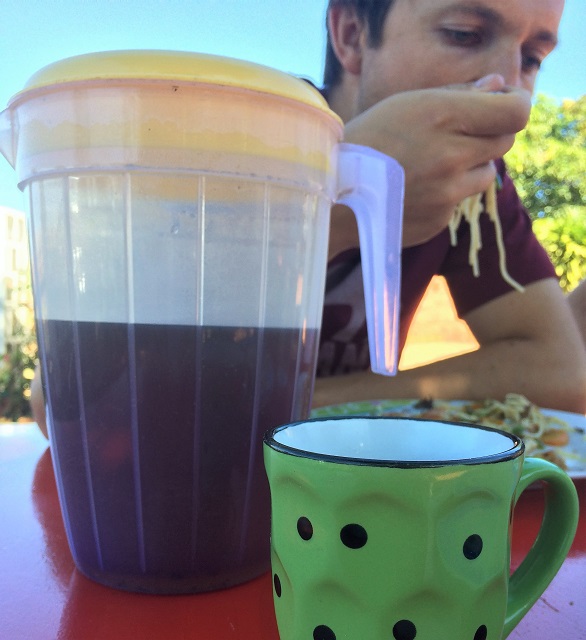
Ranonapango – an acquired taste
Transportation
Intercity buses. The cheap way to get around is by taxi-brousse (minibus), but driving anywhere takes longer than you think. Roads are rough, even between major cities. Unless you are with a select few transportation companies (Cotisse is reputable), buses will be packed to the brim and never leave on time, despite what every driver will tell you. Bring podcasts, audiobooks, or music to pass the time. A Peace Corps volunteer compiled a list of prices in 2013 on her blog, Beat Nomad.
The best view is up front, but the engine gets hot up there
Intracity transportation. Except in Tana, the main way to get around is by tuk-tuk (motorized vehicle) or rickshaw (bicycle-powered vehicle). Both should cost 1000 ariary (~30 cents) per person for rides under 10 minutes. Expect to pay more for longer rides and from the airport. Price negotiation is expected and you will need to bargain hard, especially as a foreigner. Hold your bags close to prevent theft.
Rickshaw safety. Rickshaws are the main transportation in smaller communities, but have a bad reputation for robberies in cities. Avoid taking rickshaws at night when tourists are most likely to get robbed (aided by your driver). Grab a tuk-tuk instead.
Hold onto your bags! Any time you are arriving at a bus station, grab and hold your bags tight! Drivers will race to grab your stuff and throw it on their minibus, tuk-tuk, or rickshaw without asking questions. You lose negotiating power once your bag is loaded.
Get your game face on before riding public transportation
Plan your trip
When to visit. Madagascar can be incredibly hot and humid during the wet season, especially on the east coast. November to March is the wet season. May to September are the driest months. The highlands are cooler and the west coast is drier, but air-conditioned buses and accommodations will cost extra. If you plan to visit the highlands, including Tana, bring clothes for cool weather. If you need clothing, Madagascar has open-air thrift (“frip”) markets in every city.
Wearing layers to keep warm in Tana
Costs. Sarah and I spent $57/day in Madagascar. Other than being gouged on some of the tourist activities, almost everything is dirt cheap. For a full cost breakdown, see our article: Cost to Travel in Southern Africa for 10 Weeks (Plus Some Sweet Islands in the Indian Ocean).
What to bring with you
Malaria prevention. Madagascar is a high-risk malaria zone and we took Malarone prophylactically. To prevent mosquito bites, we sprayed our clothes with Permethrin prior to our trip. Bring bug spray and keep covered with lightweight clothes.
Debit cards. ATMs are only in the big cities and frequently run out of money. Tell your bank/credit card company that you will be in Madagascar. After I lost my wallet, Sarah’s debit card got eaten by an ATM machine and we were close to having no way to access money. Luckily the bank was open and able to retrieve the card. Bring more than one debit card and don’t put them all in one place. Some machines will only accept either Visa or Mastercard (as well as cards from other countries).
Cash for Visas. As a tourist, you can purchase a 30, 60, or 90-day visa on arrival. You must pay with American dollars, Euros, or Ariary. See here for visa requirements. Don’t count on being able to exchange or withdraw currency on arrival. We flew into Tamatave (also called Toamasina) and there was no currency exchange or ATM.
Small bills get really dirty
Protect yourself and your valuables. Buy a money belt and carry your most valuable possessions with you. Don’t lose a wallet AND a phone like we did. Unless you are with someone local who knows the area, avoid going out after dark.
Guide book. We bought a Bradt guide instead of the Lonely Planet guide, since it has slightly better reviews on Amazon. We read almost the entire book during our trip since it is full of interesting information about Madagascar.
For a complete packing list, see: Packing List for 10 Weeks in Africa Followed by 6 Weeks in Canada.
Language
The majority of tourists are French and few Malagasy speak English. Knowing a little French, particularly numbers, will make your travels easier.
Important phrases:
Hello – Salama (“salamo” if you are cool)
Thank you – Misaotra (“me-soach” for short)
Bonjour, vazaha! – What children across the country will shout at you.
Local children playing with a vazaha
Conclusion
Madagascar contains unique wildlife, fascinating culture (wear silver to ward off witches and mermaids), and 22 million people living on the fourth biggest island in the world. Madagascar is an experience like nowhere else on earth—if you are intrepid enough to venture there.
Special thanks to Chris and Heather for showing us around Madagascar and for their help on this article. Check out their Peace Corps blog here: https://ourmadalove.wordpress.com/.
Let us know what questions you have in the comments. Aur revoir, vazaha!
Pin this article for later!
The following two tabs change content below.


I am Sterling, one of the Two Fish Traveling. I love to travel and live in Polson, Montana with my wife Sarah.
Latest posts by Sterling Laudon (see all)
- How to Hike the Top of the Chinese Wall in the Bob Marshall Wilderness - March 28, 2023
- All of the bad things that happen when you travel - October 14, 2019
- Favorite countries of long-term travelers - August 8, 2019





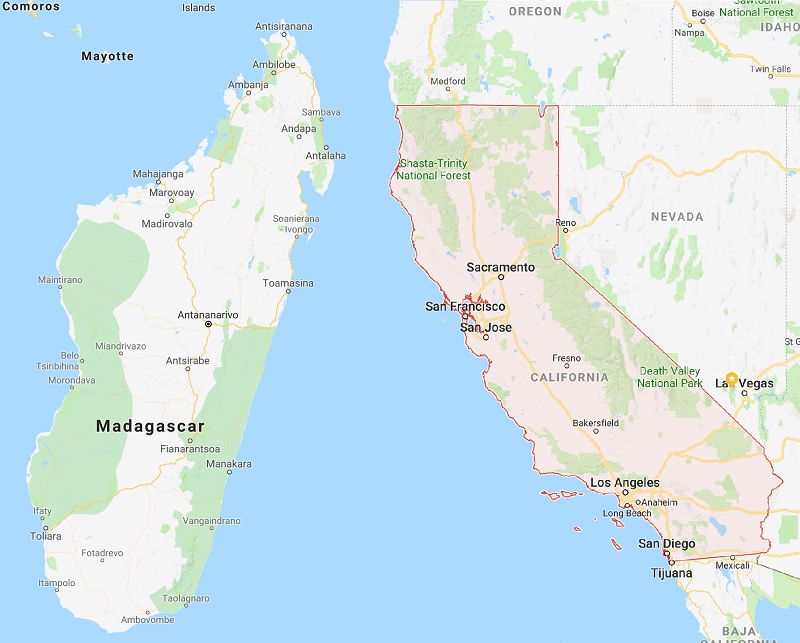
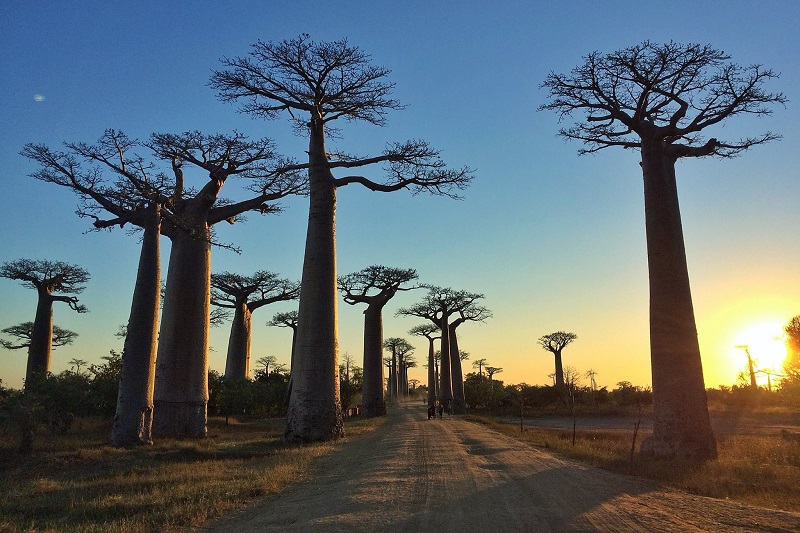
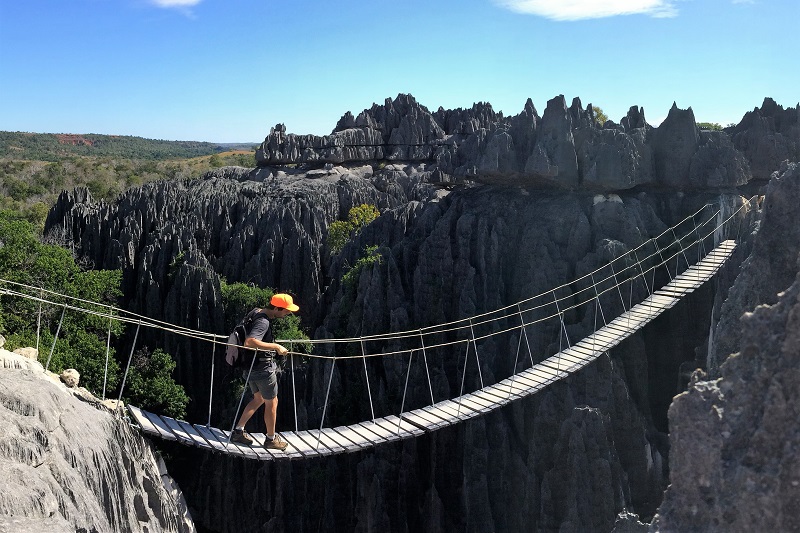
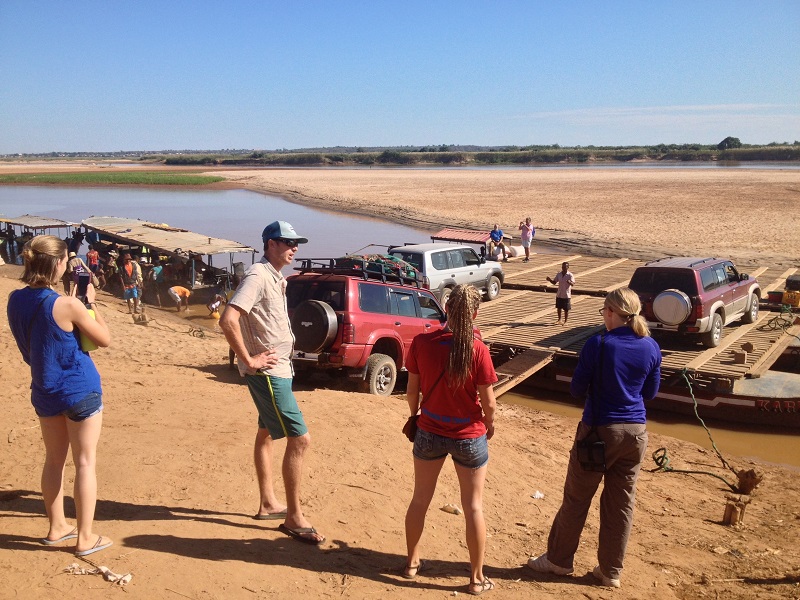
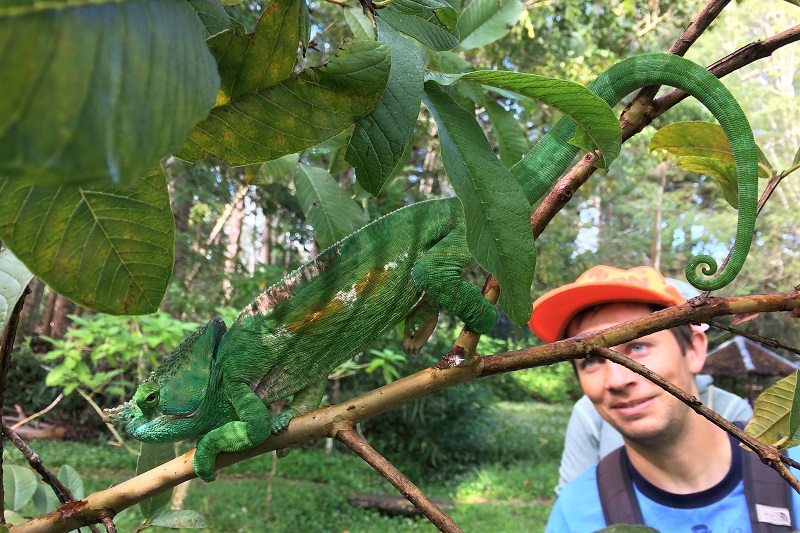
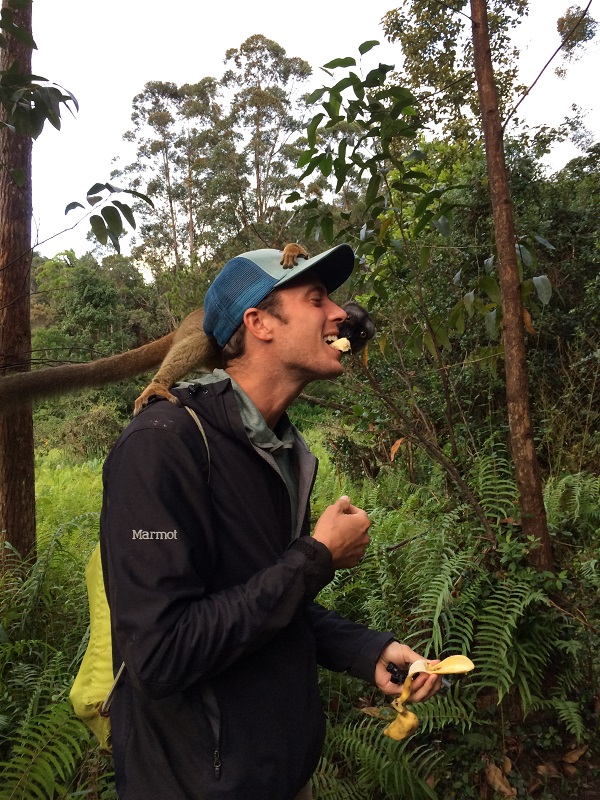
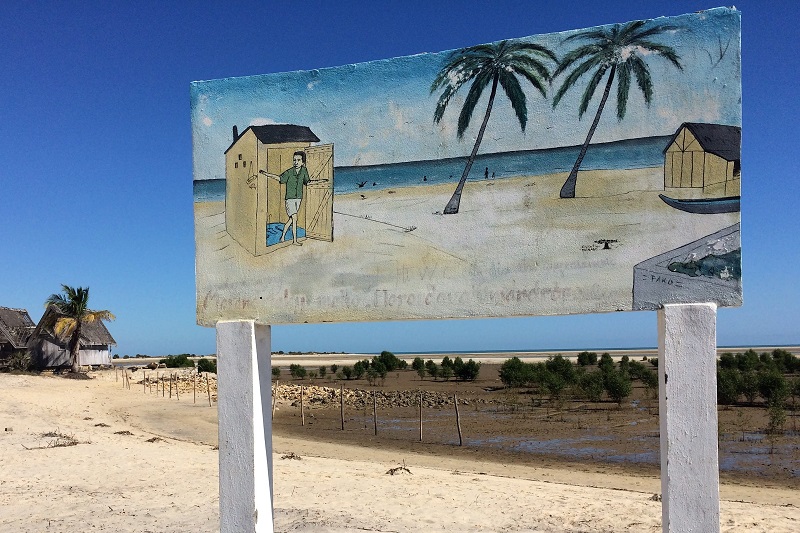
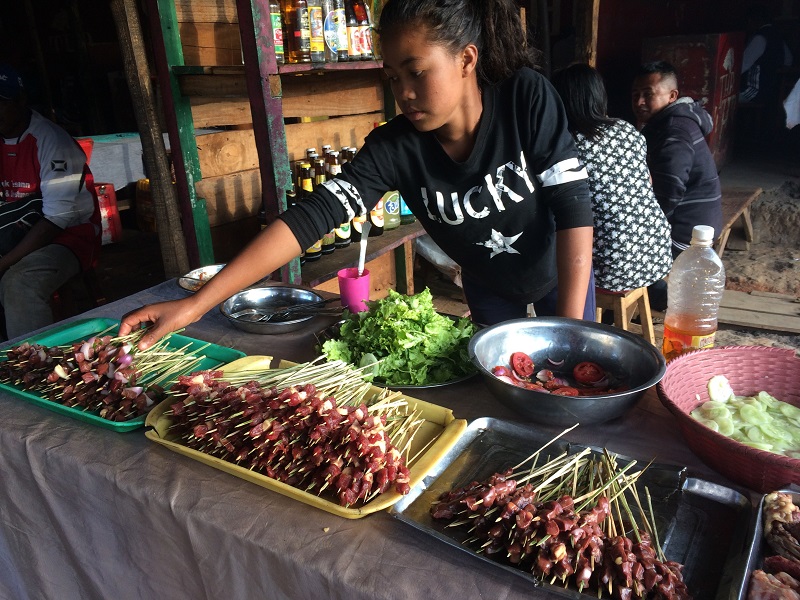
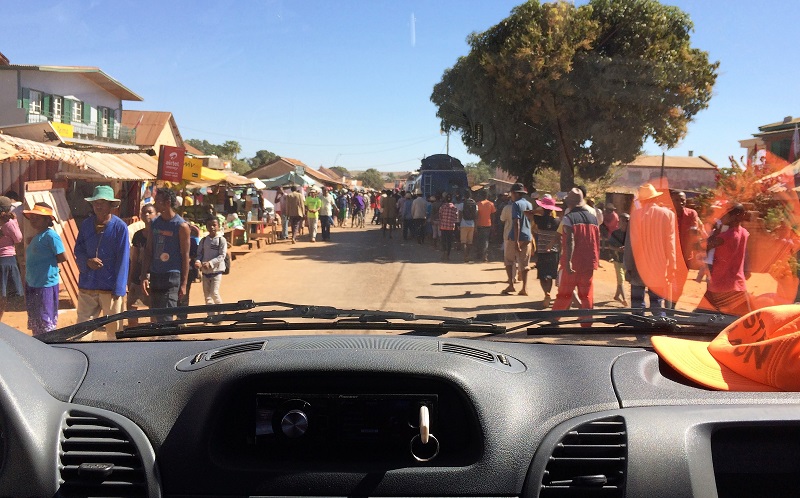
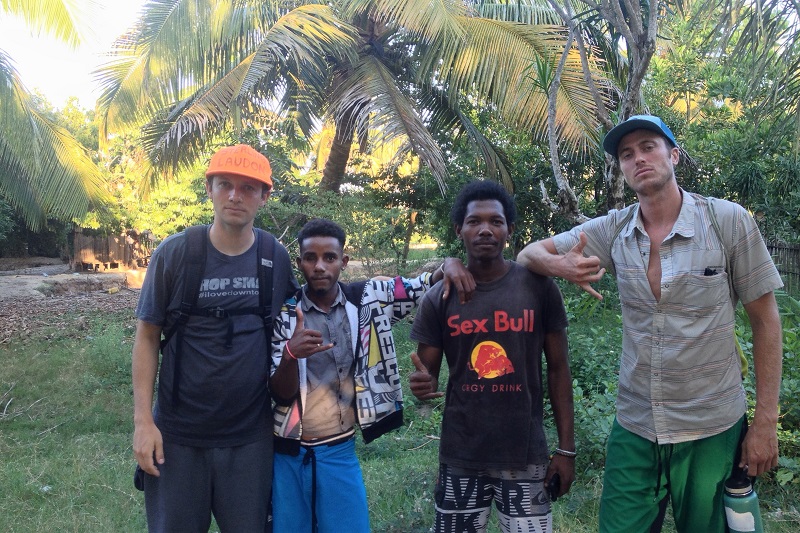
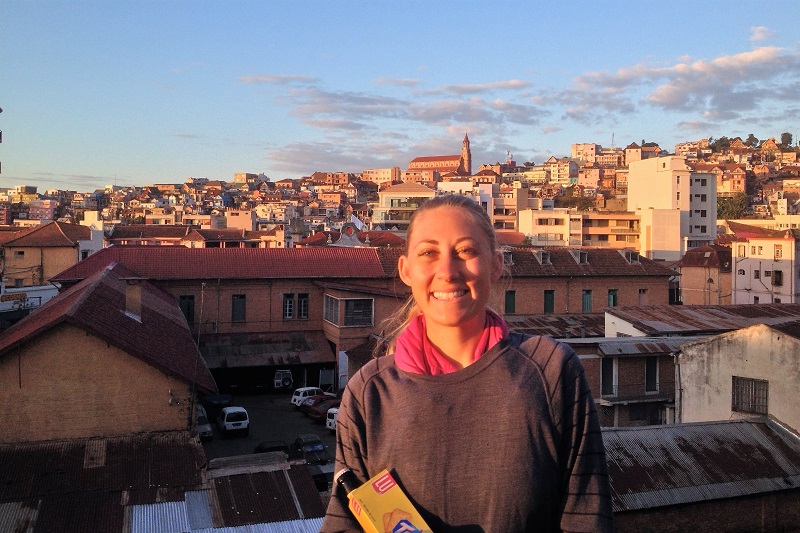
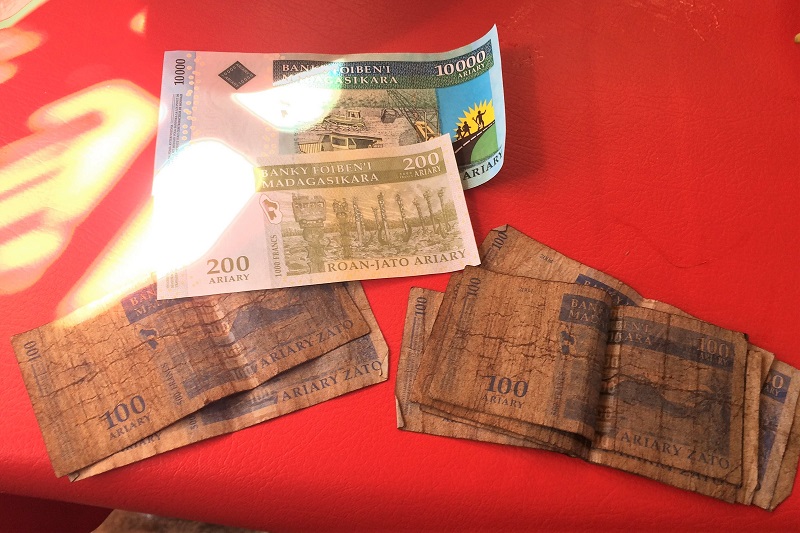
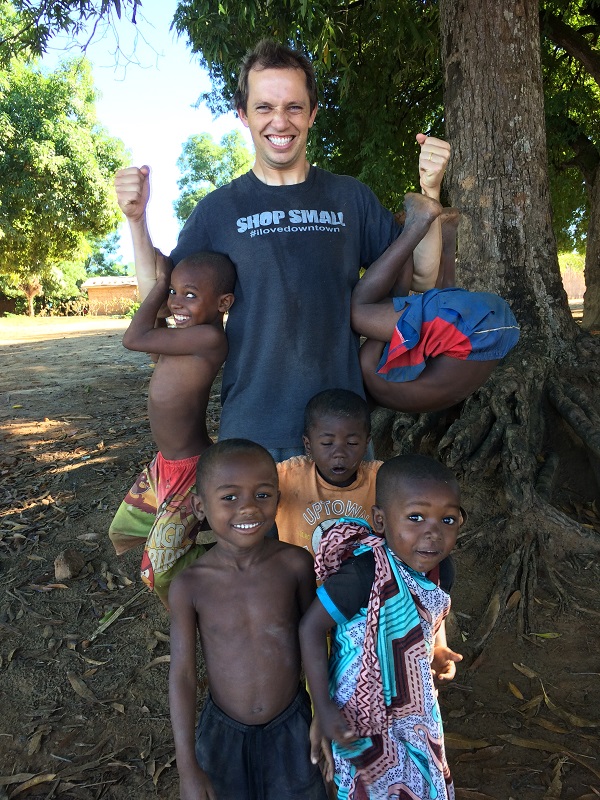
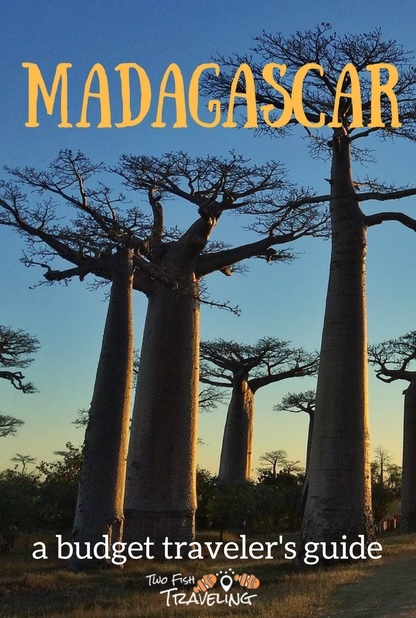


Not sure you have sold me on Madagascar. I’ll stick to my trips to Dubuque. You know they filmed Field of Dreams there.
Madagascar is only for the most adventurous–unlikely anyone from Iowa has ever been 😉
Why would they leave Iowa? There are like ten Olive Gardens.
And a field of dreams!
Really great article, lots of helpful info! My boyfriend and I are birth RPCV’s (Malawi and Cameroon) and are currently traveling for a year, headed to Madagascar next! Current plan is about a month, heading west first to hopefully get to Tsingy, Kirindy and check out baobobs. Heard Antsirabe and the rainforest is a good stop between Tana and Morondava. Probably finish by flying to Diego Suarez and head down to Nosy Be. Debating bussing back to Tana so we can pitstop at Natl park d’Ankarafantsika. Is that too crazy of an itenarary for a month?! Thanks again for sharing… Read more »
Thanks for reading! For most people, it might be a lot, but for RPCVs, I think that’s manageable. Pack some ibuprofen for the long bumpy roads. If you are too burned out to bus at the end, you can always add more time in Nosy Be and fly back to the capital instead. Hope you have a great trip!